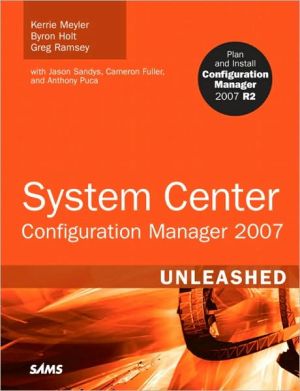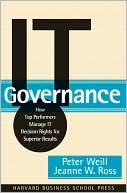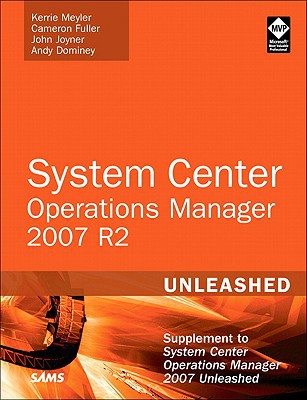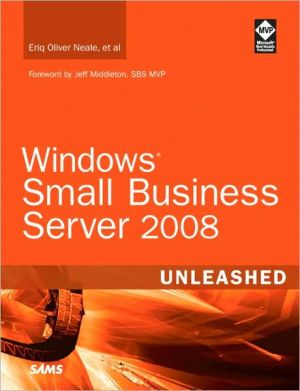The Practice of System and Network Administration
The first edition of The Practice of System and Network Administration introduced a generation of system and network administrators to a modern IT methodology. Whether you use Linux, Unix, or Windows, this newly revised edition describes the essential practices previously handed down only from mentor to protégé. This wonderfully lucid, often funny cornucopia of information introduces beginners to advanced frameworks valuable for their entire career, yet is structured to help even the most...
Search in google:
The first edition of The Practice of System and Network Administration introduced a generation of system and network administrators to a modern IT methodology. Whether you use Linux, Unix, or Windows, this newly revised edition describes the essential practices previously handed down only from mentor to protégé. This wonderfully lucid, often funny cornucopia of information introduces beginners to advanced frameworks valuable for their entire career, yet is structured to help even the most advanced experts through difficult projects. The book's four major sections build your knowledge with the foundational elements of system administration. These sections guide you through better techniques for upgrades and change management, catalog best practices for IT services, and explore various management topics. Chapters are divided into The Basics and The Icing. When you get the Basics right it makes every other aspect of the job easier--such as automating the right things first. The Icing sections contain all the powerful things that can be done on top of the basics to wow customers and managers. Inside, you'll find advice on topics such as -The key elements your networks and systems need in order to make all other services run better -Building and running reliable, scalable services, including web, storage, email, printing, and remote access -Creating and enforcing security policies -Upgrading multiple hosts at one time without creating havoc -Planning for and performing flawless scheduled maintenance windows -Managing superior helpdesks and customer care -Avoiding the "temporary fix" trap -Building data centers that improve server uptime -Designing networks for speed and reliability -Web scaling and security issues -Why building a backup system isn't about backups -Monitoring what you have and predicting what you will need -How technically oriented workers can maintain their job's technical focus (and avoid an unwanted management role) -Technical management issues, including morale, organization building, coaching, and maintaining positive visibility -Personal skill techniques, including secrets for getting more done each day, ethical dilemmas, managing your boss, and loving your job -System administration salary negotiation It's no wonder the first edition received Usenix SAGE's 2005 Outstanding Achievement Award! This eagerly anticipated second edition updates this time-proven classic: -Chapters reordered for easier navigation -Thousands of updates and clarifications based on reader feedback -Plus three entirely new chapters: Web Services, Data Storage, and Documentation ercb.com - Jack Woehr Despite sporting a title that sounds about as interesting as The Longest Checkers Games I Ever Saw, Thomas Limoncelli and Christine Hogan's The Practice of System and Network Administration is an exceptionally valuable book. This book assumes you have the technical skills already. Now the authors are going to teach you how to use those technical skills, with an emphasis on reality bites. This makes for an entertaining read, as we are introduced to the Rioting Mob enterprise-wide desktop upgrade, the rule of No Changes On Friday, the value of Visible Presence the Next Day, rules for Shredding, and the heartburn of Dealing with Printer Abuse. And how could we have survived until now without knowing why data centers install their Power Down Units upside down? So you don't get the wrong impression, this is not a book of humor. Nor, overall, is the book funny or witty. Ironic perhaps; this is a technical book for technical people, but when you're an administrator, the problem is always in the wetware, and let's face it, people are pretty funny. So it's no coincidence that the phrase "social engineering" recurs in the book like a leitmotif. The greatest value of the book is Limoncelli and Hogan's breathtakingly comprehensive view of the playing field of system and network administration. They see how the puzzle pieces fit, from the cloud down to hand-holding with the end user. They are equally familiar with network security issues, fire suppression, rack mounts, and unmanageable management goals. Some readers' favorite chapter might be the last, Chapter 31, "Firing System Administrators," a topic wherein end users and managers find much common ground, but that's probably not fair to administrators. I know, because I administer the Suns at work while my pal Paul administers the Linux and Windows boxes. Paul is a much better administrator: Although perhaps I understand the machines and software better than he does, he is more humane than I am. So are the authors of this book, who among their other hats wear one called Social Director and one called Mr. Break Time, both of whom flow with enough of the milk of human kindness to bear with the team member known as The Martyr. What The Practice of System and Network Administration is really about is administering machines for people. Four of the authors' goals Simplicity, Clarity, Generality, and Automation are extensively applied to a wealth of technical problems, but woven through the treatment is their fifth goal - Communication. Nonetheless, The Practice of System and Network Administration is not a feel-good book. It's a technical book of the first caliber, one properly scoped, carried out with first-rate writing, skillfully edited, well-designed, attractively bound, and typeset cleanly in LaTex style. Recommended reading for advanced administrators and those who would be if they could.
Appendix B: What to Do When...\ In this appendix we pull together the various elements from the rest of the book to show you how they can be used to deal with everyday situations or solve common questions SAs and managers often have.\ B.1 I'm Building a Site from Scratch\ \ Think about the organizational structure you need—Chapter 25.\ Plan your namespaces carefully—Chapter 6.\ Build a rock-solid data center—Chapter 17.\ Build a rock-solid network—Chapter 18.\ Build services that will scale—Chapter 3.\ Build a software depot, or at least plan a small directory hierarchy that can gro into a soft are depot—Chapter 23.\ Establish your initial core application services: \ \ email—Chapter 19\ DNS,DHCP—Section 1.1.3\ .le service,backups—Chapter 21\ printing—Chapter 20\ remote access—Chapter 22\ \ \ \ B.2 My Small Site Is Growing\ \ Have you grown to the point that you need a helpdesk?—Chapter 15.\ Have you grown to the point that you need a network operations center dedicated to monitoring—Chapter 24 —and coordinating network operations?\ Think about your organization and whom you need to hire—Chapter 25.\ Make sure you are monitoring services for capacity as well as availability so that you can predict when to scale them—Chapter 24.\ Be ready for an influx of new employees—See B.19,B.20,B.21.\ \ B.3 My Large Site Is Going Global\ \ Design your WAN architecture—Chapter 18.\ Make sure your helpdesk really is 24 ×7. Look at ways to leverage SAs in other time zones—Chapter 15.\ Architect services to take account of long-distance links (usually lower bandwidth and less reliable)—Chapter 3.\ Qualify applications for use over high-latency links—Section 3.1.2.\ \ B.4 Services Are Being Replaced\ \ Be conscious of the process—Chapter 11.\ Manage your DHCP lease times to aide the transition—Section 1.1.4.\ Don't hardcode server names into configurations, hardcode aliases that move with the service—Section 3.1.6.\ Manage your DNS time-to-live values to switch to new servers—Section 13.2.1.\ \ B.5 Moving a Data Center\ \ You need to have a scheduled maintenance window, unless everything is fully redundant and you can move one half of a redundant pair and then the other—Chapter 12.\ Make sure the new data center is properly designed—Chapter 17.\ Back up every file system of any machine before it is moved.\ Perform a "firedrill" on your data backup system —Section 21.2.1.\ Develop test cases before you move and test, test, test everything after the move is complete—Chapter 11.\ \ B.6 Lots of People Are Moving Their Office\ \ Work with facilities to allocate just one "move day" each week.\ Establish a procedure and a form that will get you all the information you need about each person who is moving (what equipment they have, how many network connections, telephone connections, special needs). Have SAs check out nonstandard equipment in advance and make notes.\ Connect and test network connections ahead of time.\ Have customers power down their machines before the move and put all cables, mice, keyboards, and other bits that might get lost into a marked box.\ Brainstorm all the ways that some of the work can be done by the people moving. Be careful to assess their skill level—maybe certain people shouldn't do anything themselves.\ Have a moving company actually move the equipment and have a designated SA move team do the unpacking, reconnecting, and testing. Take care in selecting the movers—there are some good companies out there, but there are also a lot of bad ones.\ Train the helpdesk to check with customers who report problems to see if they have just moved and didn't have the problem before the move; then, pass those requests to the move team rather than the usual escalation path.\ Formalizing the process, limiting it to one day a week, doing the prepwork, and having a move team makes it go more smoothly with less downtime for the customers and less move-related problems for the SAs to check out....\
Preface xxvAcknowledgments xxxvAbout the Authors xxxviiPart I: Getting Started 1Chapter 1: What to Do When . . . 3Chapter 2: Climb Out of the Hole 27Part II: Foundation Elements 39Chapter 3: Workstations 41Chapter 4: Servers 69Chapter 5: Services 95Chapter 6: Data Centers 129Chapter 7: Networks 187Chapter 8: Namespaces 223Chapter 9: Documentation 241Chapter 10: Disaster Recovery and Data Integrity 261Chapter 11: Security Policy 271Chapter 12: Ethics 323Chapter 13: Helpdesks 343Chapter 14: Customer Care 363Part III: Change Processes 389Chapter 15: Debugging 391Chapter 16: Fixing Things Once 405Chapter 17: Change Management 415Chapter 18: Server Upgrades 435Chapter 19: Service Conversions 457Chapter 20: Maintenance Windows 473Chapter 21: Centralization and Decentralization 501Part IV: Providing Services 521Chapter 22: Service Monitoring 523Chapter 23: Email Service 543Chapter 24: Print Service 565Chapter 25: Data Storage 583Chapter 26: Backup and Restore 619Chapter 27: Remote Access Service 653Chapter 28: Software Depot Service 667Chapter 29: Web Services 689Part V: Management Practices 725Chapter 30: Organizational Structures 727Chapter 31: Perception and Visibility 751Chapter 32: Being Happy 777Chapter 33: A Guide for Technical Managers 819Chapter 34: A Guide for Nontechnical Managers 853Chapter35: Hiring System Administrators 871Chapter 36: Firing System Administrators 899Epilogue 909Appendixes 911Appendix A: The Many Roles of a System Administrator 913Appendix B: Acronyms 939Bibliography 945Index 955
\ Jack WoehrDespite sporting a title that sounds about as interesting as The Longest Checkers Games I Ever Saw, Thomas Limoncelli and Christine Hogan's The Practice of System and Network Administration is an exceptionally valuable book. \ This book assumes you have the technical skills already. Now the authors are going to teach you how to use those technical skills, with an emphasis on reality bites. This makes for an entertaining read, as we are introduced to the Rioting Mob enterprise-wide desktop upgrade, the rule of No Changes On Friday, the value of Visible Presence the Next Day, rules for Shredding, and the heartburn of Dealing with Printer Abuse. And how could we have survived until now without knowing why data centers install their Power Down Units upside down?\ So you don't get the wrong impression, this is not a book of humor. Nor, overall, is the book funny or witty. Ironic perhaps; this is a technical book for technical people, but when you're an administrator, the problem is always in the wetware, and let's face it, people are pretty funny. So it's no coincidence that the phrase "social engineering" recurs in the book like a leitmotif.\ The greatest value of the book is Limoncelli and Hogan's breathtakingly comprehensive view of the playing field of system and network administration. They see how the puzzle pieces fit, from the cloud down to hand-holding with the end user. They are equally familiar with network security issues, fire suppression, rack mounts, and unmanageable management goals.\ Some readers' favorite chapter might be the last, Chapter 31, "Firing System Administrators," a topic wherein end users and managers find much common ground, but that's probably not fair to administrators. I know, because I administer the Suns at work while my pal Paul administers the Linux and Windows boxes. Paul is a much better administrator: Although perhaps I understand the machines and software better than he does, he is more humane than I am. So are the authors of this book, who among their other hats wear one called Social Director and one called Mr. Break Time, both of whom flow with enough of the milk of human kindness to bear with the team member known as The Martyr.\ What The Practice of System and Network Administration is really about is administering machines for people. Four of the authors' goals Simplicity, Clarity, Generality, and Automation are extensively applied to a wealth of technical problems, but woven through the treatment is their fifth goal - Communication.\ Nonetheless, The Practice of System and Network Administration is not a feel-good book. It's a technical book of the first caliber, one properly scoped, carried out with first-rate writing, skillfully edited, well-designed, attractively bound, and typeset cleanly in LaTex style. Recommended reading for advanced administrators and those who would be if they could.\ — ercb.com\ \ \








